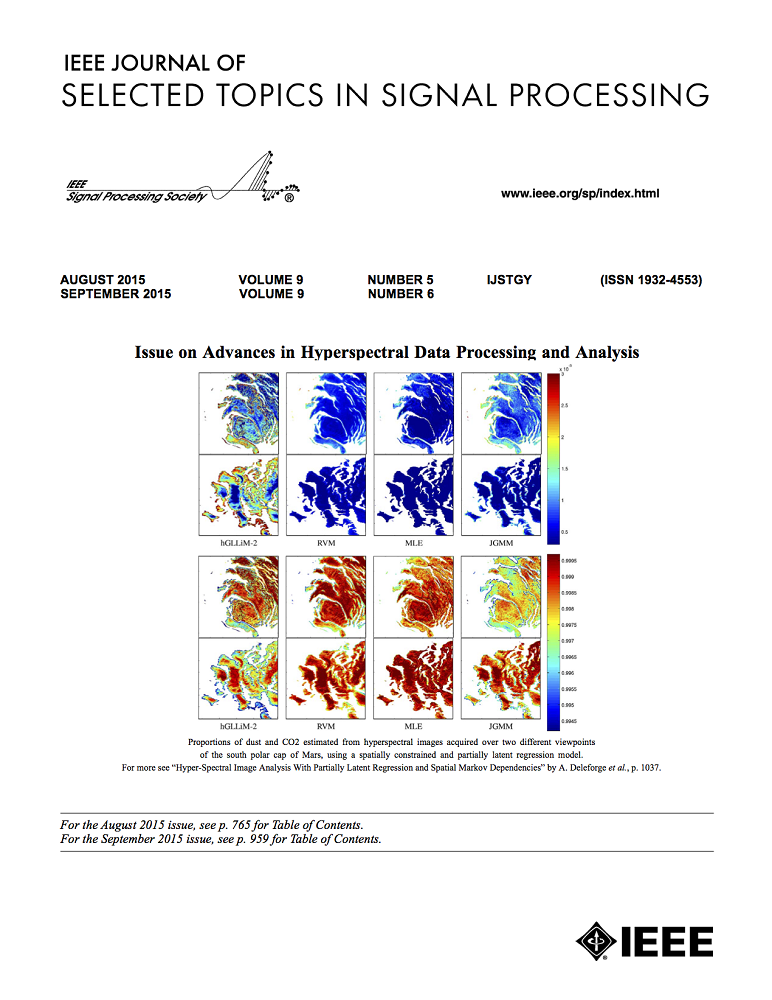Universal Speech Token Learning via Low-Bitrate Neural Codec and Pretrained Representations
IF 8.7
1区 工程技术
Q1 ENGINEERING, ELECTRICAL & ELECTRONIC
IEEE Journal of Selected Topics in Signal Processing
Pub Date : 2024-10-30
DOI:10.1109/JSTSP.2024.3488557
引用次数: 0
Abstract
Current large speech language models are mainly based on semantic tokens from discretization of self-supervised learned representations and acoustic tokens from a neural codec, following a semantic-modeling and acoustic-synthesis paradigm. However, semantic tokens discard paralinguistic attributes of speakers that is important for natural spoken communication, while prompt-based acoustic synthesis from semantic tokens has limits in recovering paralinguistic details and suffers from robustness issues, especially when there are domain gaps between the prompt and the target. This paper unifies two types of tokens and proposes the UniCodec, a universal speech token learning that encapsulates all semantics of speech, including linguistic and paralinguistic information, into a compact and semantically-disentangled unified token. Such a unified token can not only benefit speech language models in understanding with paralinguistic hints but also help speech generation with high-quality output. A low-bitrate neural codec is leveraged to learn such disentangled discrete representations at global and local scales, with knowledge distilled from self-supervised learned features. Extensive evaluations on multilingual datasets demonstrate its effectiveness in generating natural, expressive and long-term consistent output quality with paralinguistic attributes well preserved in several speech processing tasks.通过低比特率神经编解码器和预训练表征学习通用语音令牌
目前的大型语音语言模型主要基于自监督学习表征离散化产生的语义标记和神经编解码器产生的声学标记,遵循语义建模和声学合成范式。然而,语义标记丢弃了对自然口语交流非常重要的说话人的副语言属性,而基于语义标记的提示声合成在恢复副语言细节方面有局限性,并且存在鲁棒性问题,尤其是当提示和目标之间存在领域差距时。本文将两种标记统一起来,并提出了 UniCodec--一种通用语音标记学习方法,它将语音的所有语义(包括语言信息和副语言信息)封装到一个紧凑的、语义分离的统一标记中。这种统一标记不仅有利于语音语言模型利用副语言提示进行理解,还有助于语音生成的高质量输出。我们利用低比特率神经编解码器在全局和局部范围内学习这种分离的离散表征,并从自监督学习的特征中提炼知识。在多语言数据集上进行的广泛评估证明,它能有效生成自然、富有表现力和长期稳定的输出质量,并在多项语音处理任务中很好地保留了副语言属性。
本文章由计算机程序翻译,如有差异,请以英文原文为准。
求助全文
约1分钟内获得全文
求助全文
来源期刊

IEEE Journal of Selected Topics in Signal Processing
工程技术-工程:电子与电气
CiteScore
19.00
自引率
1.30%
发文量
135
审稿时长
3 months
期刊介绍:
The IEEE Journal of Selected Topics in Signal Processing (JSTSP) focuses on the Field of Interest of the IEEE Signal Processing Society, which encompasses the theory and application of various signal processing techniques. These techniques include filtering, coding, transmitting, estimating, detecting, analyzing, recognizing, synthesizing, recording, and reproducing signals using digital or analog devices. The term "signal" covers a wide range of data types, including audio, video, speech, image, communication, geophysical, sonar, radar, medical, musical, and others.
The journal format allows for in-depth exploration of signal processing topics, enabling the Society to cover both established and emerging areas. This includes interdisciplinary fields such as biomedical engineering and language processing, as well as areas not traditionally associated with engineering.
 求助内容:
求助内容: 应助结果提醒方式:
应助结果提醒方式:


